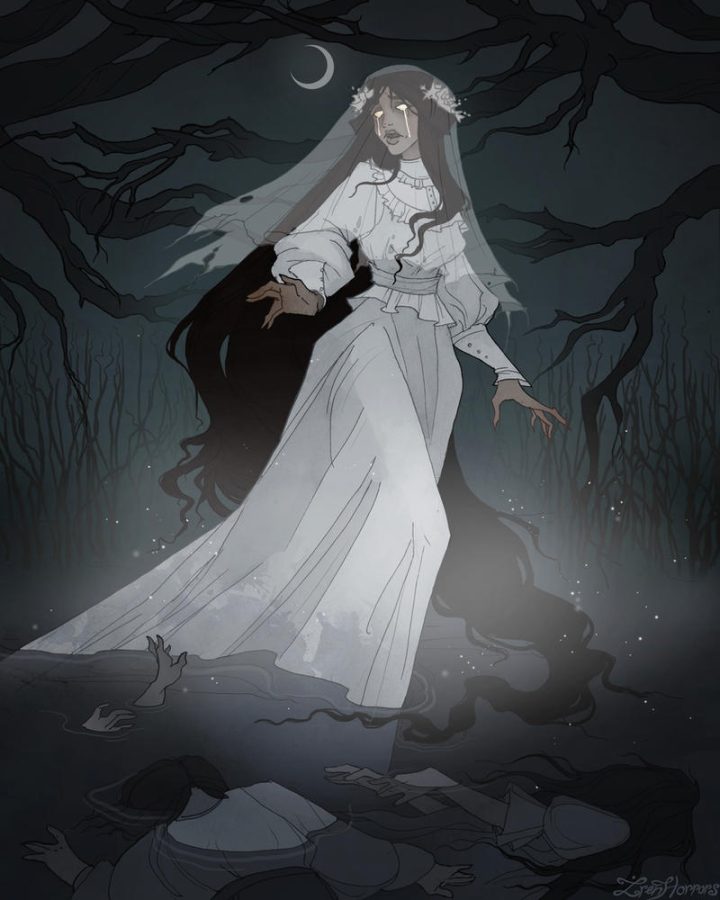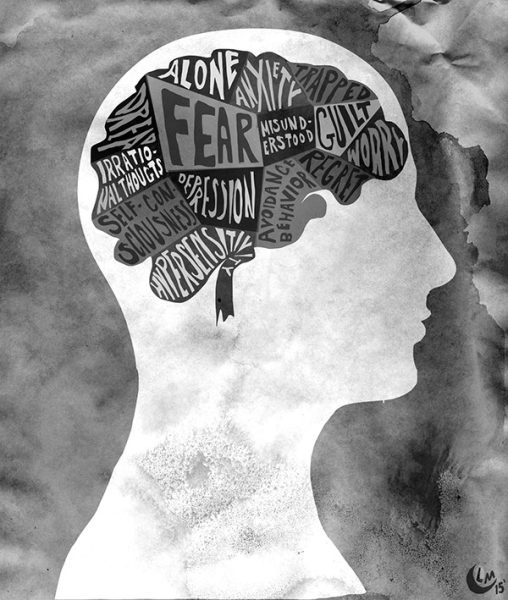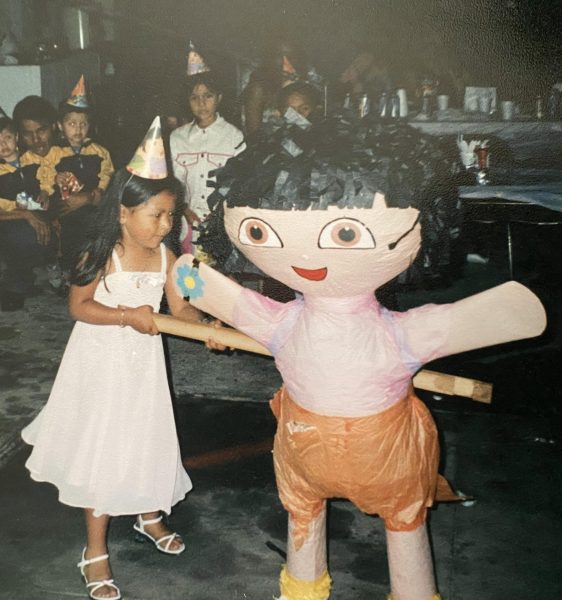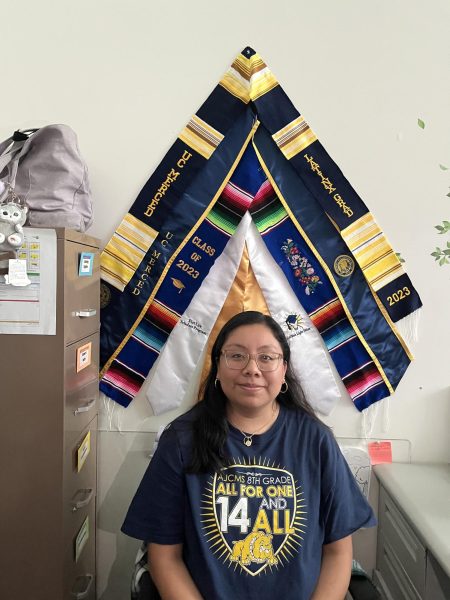The urban legend of La Llorona
La Llorona is hiding in the shadows!!
No ghost story is told as often, discussed as excitedly, or interpreted as broadly as the legend of La Llorona in Latin America, amongst Spanish-speaking populations in the United States, and especially in Mexico. “La Llorona” means “weeping woman,” so it’s no surprise that she weeps throughout all of her stories. Aside from that one distinguishing feature, the ghost known as “La Llorona” is described in a variety of ways: numerous legends exist about what she looks like and does, and even more about how she came to be such a gloomy spirit.
Who is La Llorona, and what is her story? What is her nickname, and why is it so? According to Laura Bradley in Vanity Fair, the first written record of La Llorona dates from 1550 in Mexico City. However, there are hypotheses that her story is linked to Aztec mythology creation stories. According to legend, a woman named Maria married a wealthy man named Perez, or Father Perez, and had two children with him, Bartolo and Diego, many years ago. Their marriage hit a snag when her husband started spending less and less time at home, and when he did, his attention was all on the kids. Later then, she finds him with another lady. Some accounts indicate Maria drowned her two children out of wrath, but she quickly regretted it, crying out, “Ay, mis hijos!” (It means “Oh, my sons!” or “Oh, my children!”). Maria is alleged to have drowned herself as a result of her ordeal.
When she arrived at heaven’s gates, however, she was denied admittance and sent back to Earth’s purgatory as an evil spirit until she could locate her children. Now, the legend says, she floats over and near bodies of water in her white, funereal gown, forever weeping as she searches for her lost children. Some versions of the story say she kidnaps or attacks children; other versions, according to Bustle, say she attacks cheating husbands. Regardless, when you hear her cries, the directive remains the same: run away.
Alex Lainez is a big fan who likes horror. He commented on the urban legend. He believes that the legend of La Llorona is based on a real story because he has seen her walking and crying and walking in her wedding gown in search of her kids on the internet. He also says that if you hear her calling for her child and it seems like it’s near you, it means she’s far away, but if the cries sound far, it means she’s close.
The narrative of La Llorona is told to youngsters all over Latin America, with other versions spreading in Mexico and the United States. According to the National Museum Of American History, she has been identified as Coatlicue, an Aztec deity who was said to be heard sobbing for her Aztec children on the eve of the Spanish conquest, according to tradition. Some believe she is the reincarnation of a poor lady from Ciudad Juárez who stabbed and drowned her children in the Rio Grande to gain the love of a wealthy man. Another tradition claims that La Llorona is La Malinche, Hernán Cortés’ key interpreter, and lover. La Malinche was replaced by Cortés’ first wife (who had been waiting for him in Cuba) after the collapse of the Aztec capital, and she was swiftly married off to one of his Spanish comrades. La Malinche and La Llorona, whether considered as overlapping or separate figures, reappear frequently in Mexican popular culture, north and south of the border.
La Llorona is even told in the United States to scare children into good behavior, sometimes specifically to deter children from playing near dangerous water. Also told to children is that her cries are heard as she walks around the street or near bodies of water to scare children from wandering around, resembling the stories of El Cucuy. Although no one knows whether or not this urban legend is true, it appears to have given everyone in the Hispanic community shivers. It has been passed down from generation to generation and is still being passed down today.











Anahi lopez • Apr 7, 2022 at 12:18 pm
I think La Llorona is a good story this is my favorite story all of all.
melody • Apr 7, 2022 at 8:37 am
I love her story but I hate that she drowns her kids I didn’t like it.
Anahi lopez • Apr 7, 2022 at 8:37 am
Something that I learned was that she had drown her kids in the river this makes me think that why did she drown her kids in the river.
Yatziry B. • Apr 7, 2022 at 8:34 am
I love the urban legend of La Llorona. I heard the story from my aunt and it was good to hear but it was sad when she drowned her own kids.
Eleanor • Apr 7, 2022 at 8:32 am
I love the urban legend of La Llorona. heard the story from my grandparents and I enjoyed it a lot but it was sad when i heard she drowned her own kids.
rossibell • Mar 24, 2022 at 8:42 am
I love horrors stories and i really enjoyed reading and watching the movie and i really like the part were she drowns her kids.
Eduardo Teodores. • Mar 24, 2022 at 8:36 am
I knew that the la llorona was a story but did not now that it dated back to the Aztec times.
Geraldine Sanchez • Mar 24, 2022 at 8:36 am
La Llorona is a story I grew up hearing since young but I never got to experience an interaction. My family members have told me stories of paranormal things in Mexico. I strongly believe that Mexico is extremely scary with all its urban legends , like La Llorona and I believe their true.
Jonathan Ramirez • Mar 22, 2022 at 9:01 am
I love stories and movies about la Llorona I have seen the movies in real life and in cartoon hope you did to our stories was cool it was sad to me a little
Oliver Ramirez • Mar 22, 2022 at 8:30 am
I remember when my mom used to scare me with urban legends. That used to give me nightmares, especially La Llorona.